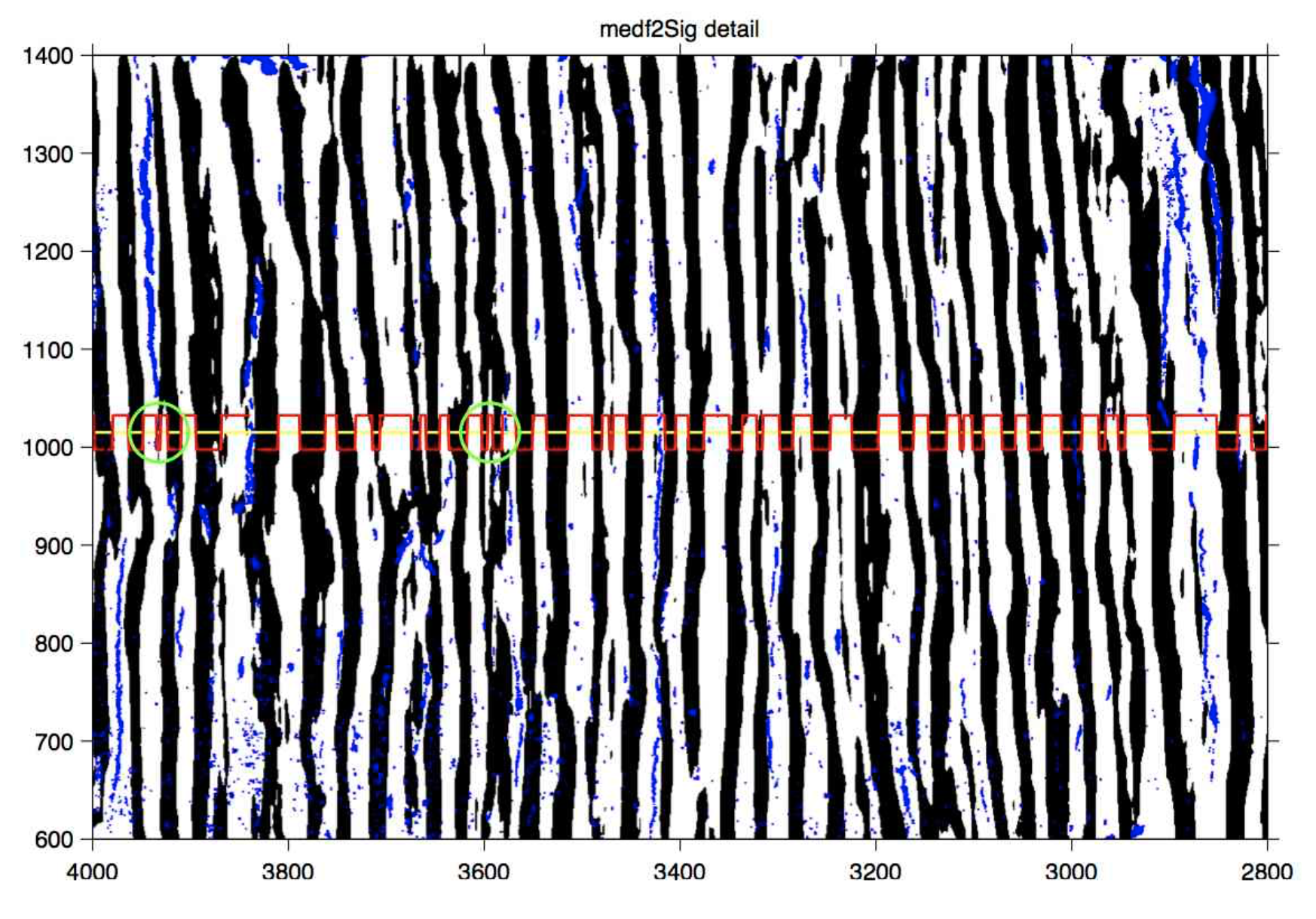 A fuzzy-logic based algorithm may provide a better way to detect annual sediment layers (varves) in digital images of sediments.
A fuzzy-logic based algorithm may provide a better way to detect annual sediment layers (varves) in digital images of sediments.
The manual counting of the annual sediment layers (varves) is time consuming and error-prone. Numerous attempts have been made to automate this process, but also these methods are susceptible to errors. The failure of most of automated algorithms for varve counting is the complexity of the seasonal laminations, typically rich in lateral facies variations and internal heterogeneities.
Doctoral student Thomas Ebert used an adaptive neuro fuzzy inference system (ANFIS) to detect varves on the basis of a digital image of the sediment. The results of the application of the ANFIS to laminated sediments from the Meerfelder Maar (Eifel, Germany) and from a landslide-dammed lake in the Quebrada de Cafayate of Argentina are compared with manual varve counts. The results were very similar taking into account that the quality of manual varve counts is also limited by the specific quality of the images used for counting. In such cases automated algorithms may help in detecting possible errors in the process of manual varve counting.
Download MATLAB code and examples (Paper Version)
Download MATLAB code examples (Update April 2020)
References
Ebert, T., Trauth, M.H. (2015) Semi-automated detection of annual laminae (varves) in lake sediments using a fuzzy logic algorithm. Palaeogeography, Palaeoclimatology, Palaeoecology, 435, 272-282.
